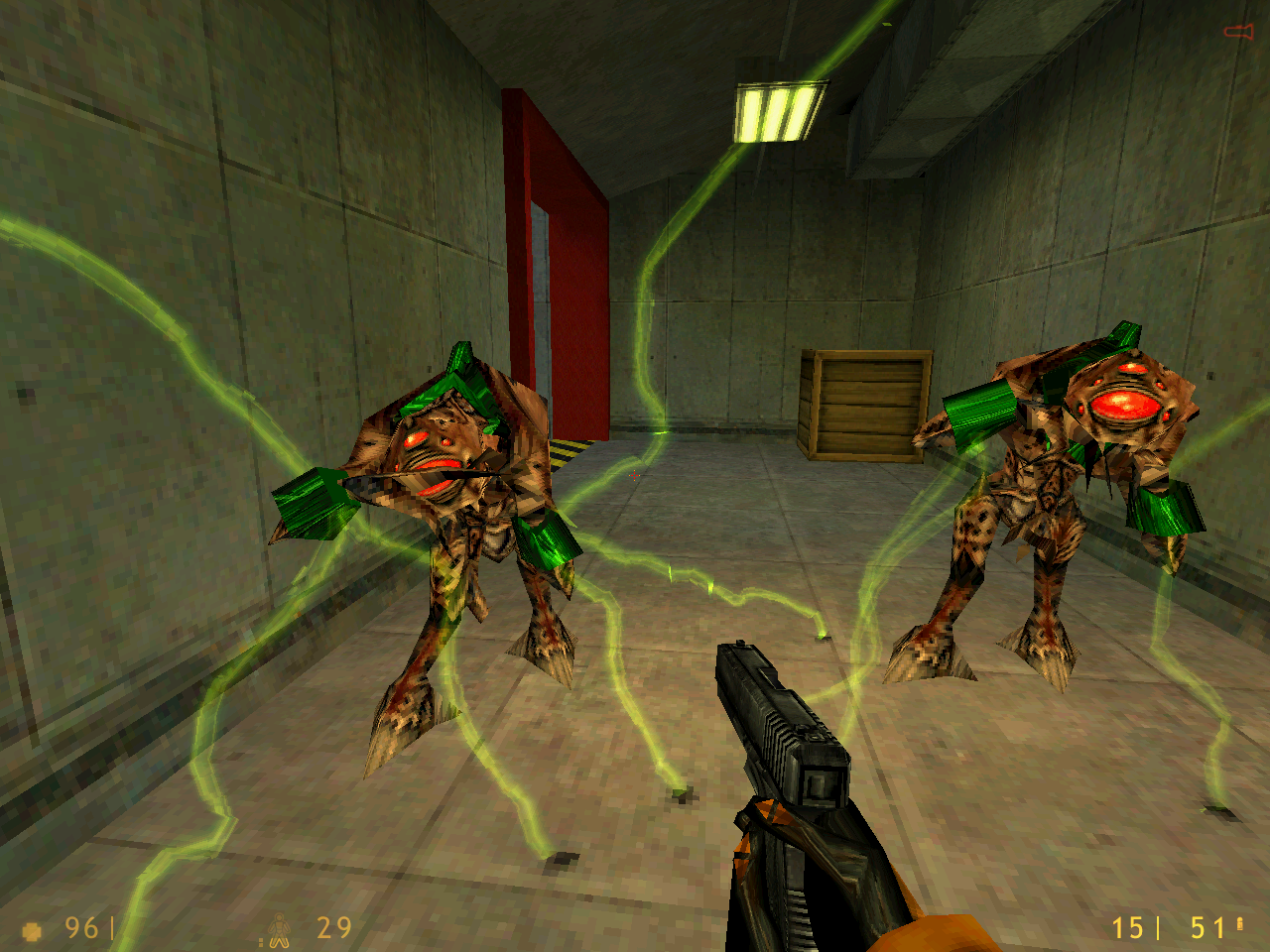119th played so far
Genre: First Person Shooter
Platform: PC
Year of Release: 1998
Developer: Valve
Publisher: Sierra Entertainment
Oh, Half-Life, how happy I am to see you again. Imagine me, over a decade ago, seeing this game played over at my cousin’s place, and having some tries. Amazed at the graphics. Marvelling at the options. It was brilliant. Two years later, having some disposable income, I got the Half-Life Generation box, containing this game and a few more – the one we’re now using to play this. Happiness all together. Then I got other games and this game ended up on the ‘need to play further’ list.
And now there’s the blog. And this ended up on there – of course it is, Half-Life is, as we’ll see down the line, a classic that features so much. But at the same time… does that magnificent introduction still live up? Do the NPCs still seem as alive? Are those corridors still as long as they always were?
Our Thoughts
While I’d be hard pressed to call Half-Life the granddaddy of FPS games – games like Doom and Quake got there far earlier, and Half-Life clearly owes a debt to them – it’s hard to not look at this game and see how it comes back to influence many different games. It’s like Grand Theft Auto 3 – not the first sandbox game, but it changed the landscape forever. It’s not the grandfather of the modern FPS, but it’s certainly the milkman the child resembles more than the official heritage. Whilst the image of computer games going into town on each other is one that will undoubtedly shape tonight’s nightmares it is a fairly apt description. In ecology we talk about ‘cornerstone species’ without which the entire ecosystem would collapse. In a similar fashion it is doubtful that we would be playing the games we do now if it was not for Half Life. The ripples of it’s influence can be seen in games such as Fallout 3 and arguabley the Halo franchise
After you’ve played the Hazard Course – the in-character (though not in-game) tutorial that I understand we might reference when Portal comes around – the game itself starts with what must be an iconic monorail/train/tram ride that actually reminded us of the similar setting we saw in Far Cry 2 a while ago. It is done far better here than in Far Cry 2, here it was a showcase with meaningful information… in the other game it was just annoying. This, at the time, was purely to show off the graphics, as well as the impressive (though at this point on rails) scripting.
Although you actually get to move later, part of this continues – your first ten minutes consist of you moving around your part of the complex, interacting with people and making your way to the experiment chamber.
After the happenings there, the game takes off. You jump around, kill aliens and find your way through the complex to figure out the plot and prevent the alien invasion. The amazing thing here is that there’s no real cutscenes to tell you this, no text screens, voice overs or dialogs. All of this can be learned from the comments made by characters you meet on the way and learn from. There are some impressive feats of scripting here. It is also a good point to mention the man of the hour himself theoretical physicist Dr. Gordon Freeman; proof positive that geeks can kick ass with a crowbar.
The graphics of the game are of its time. Dated – good at the time, but the amount of time put into showing off seems over the top at this point. Character animation is off, with the faces looking scary rather than pleasant (especially when they mouth out the beeps when they use the keypad), as if there had earlier been an invasion of zombies who took over all the staff in the complex.
Aside from that though, the game stays fun. Challenging, with a lot of reliance on you finding your own way, but fun to try to find your way around.
Final Thoughts
This game has been done later, and better. But it’s clearly a game that influenced many games after it, and it arguably did a lot of things better than they did afterwards. In the end, even though it’s not always an impressive game any longer, it is still a very good game.

[…] today’s entry seems short, it’s because a lot of this can reference Half-Life again. It is, you could say, the nature of this […]
[…] clues of where to go and the memetic phrase ‘the cake is a lie’ and links to the Half Life […]
[…] time flies, right?) Team Fortress Classic, a multiplayer-only FPS (bots in practice mode) based on Half-Life that became quite big. So big, in fact, that Valve made a […]
[…] Half-Life series is one of the big ones that revolutionised story telling in games and really pushed the FPS […]
[…] are revered as a pur, early example. Making a sequel a decade later, in a post-Unreal, post-Half-Life world creates a challenge as it no longer works as well in that world. Even fifteen years ago, […]